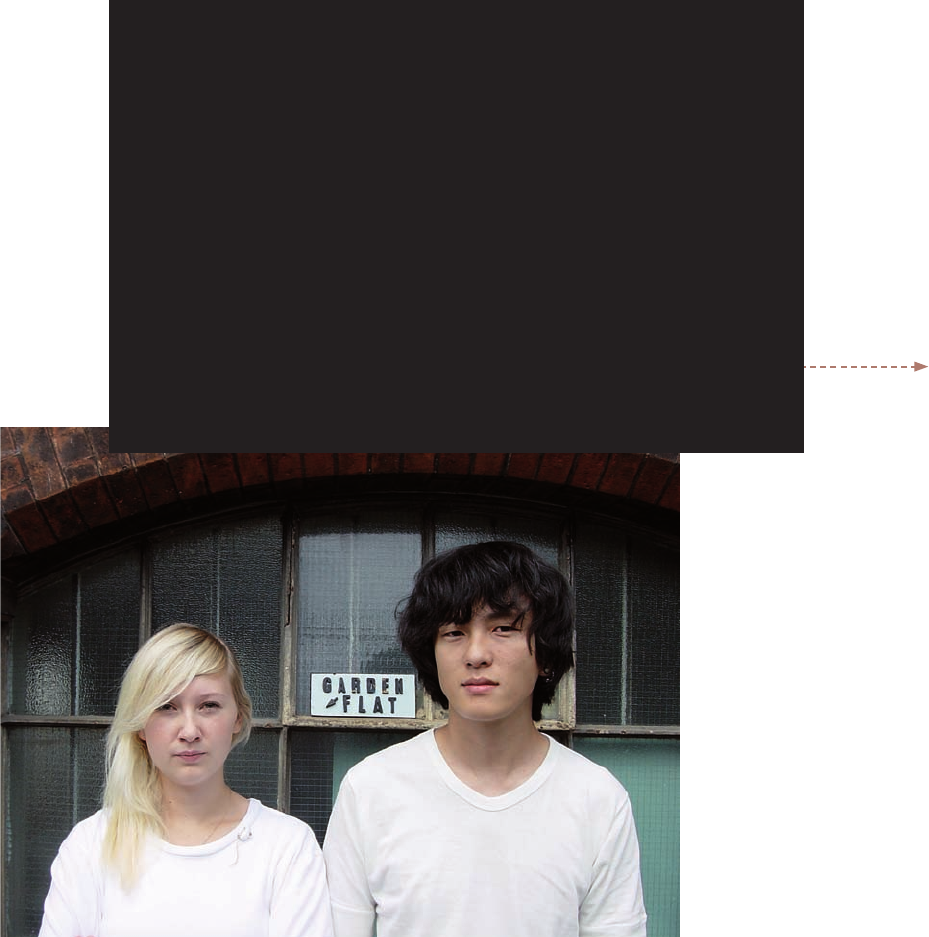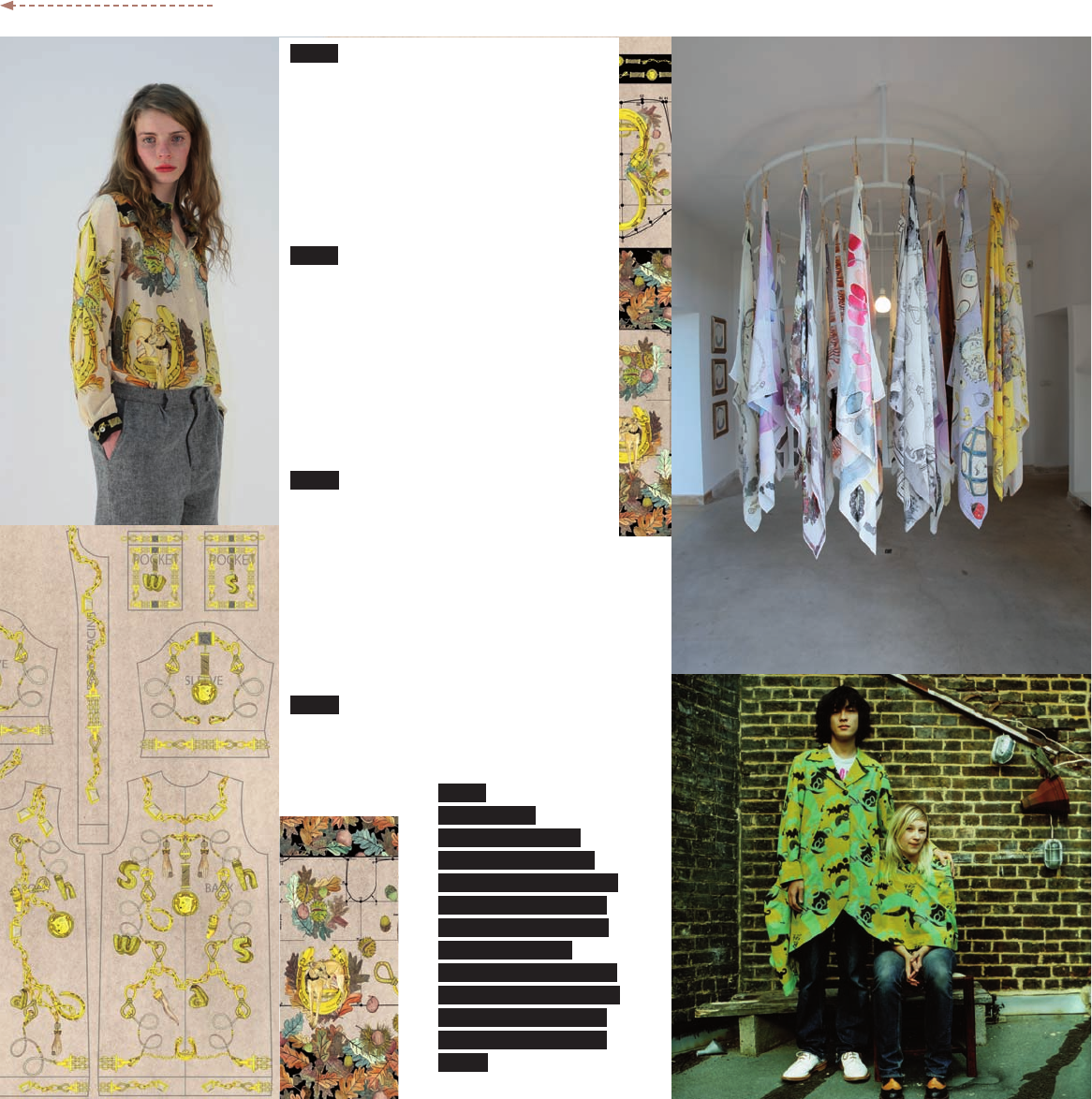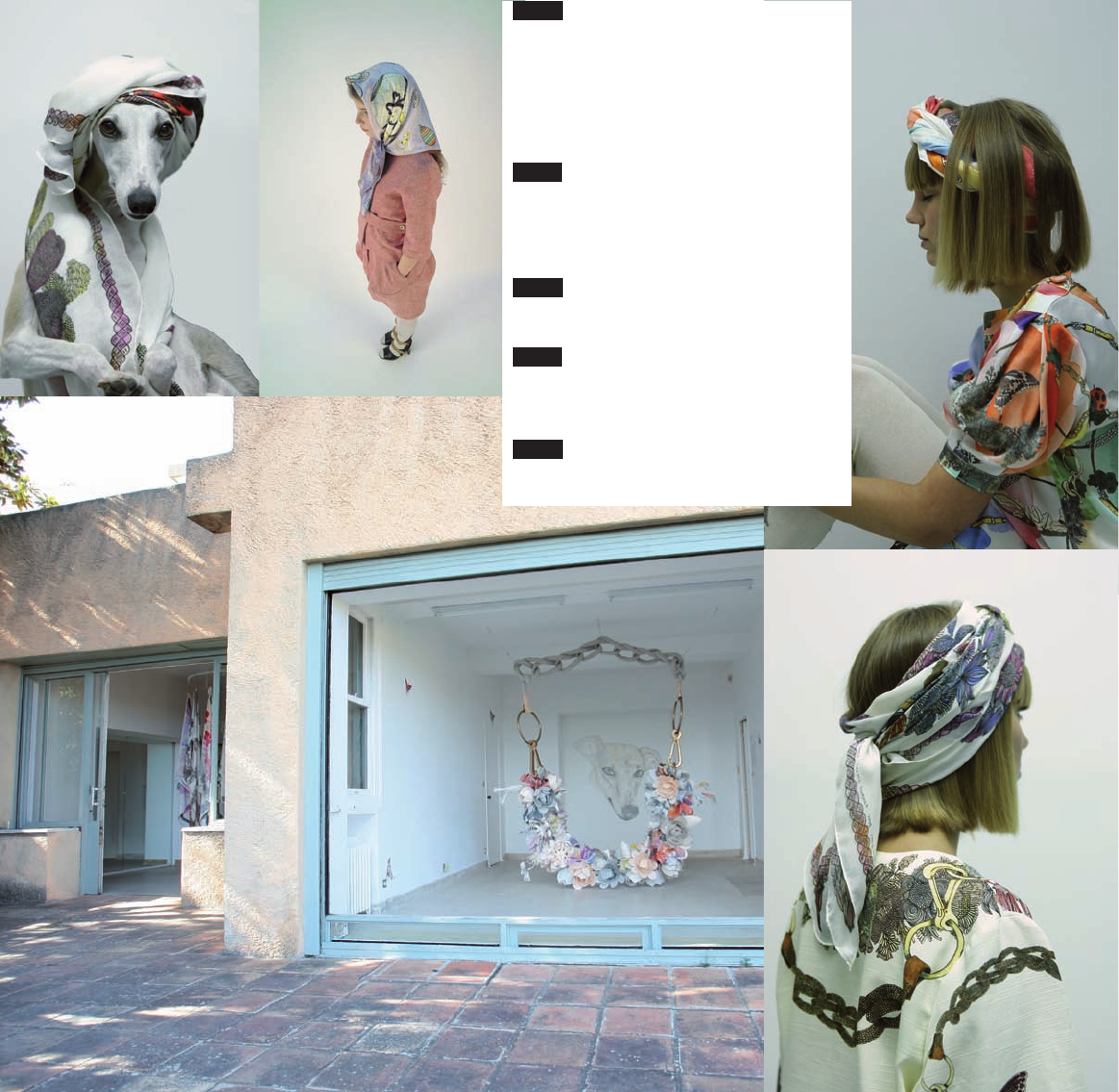
Sarah Swash, Toshio Yamanaka/Swash 245
076
TFD_libro.indb 245 26/11/09 16:57:53
Sarah Swash and Toshio
Yamanaka graduated
from Central Saint
Martins College of Art
and Design in 2001
with a BA (Hons) in
womenswear. They
envisioned their
eponymous label in
2004, and showcased
their collection at
Hyères where they
won the Fashion
Grand Prix and were
awarded a further two
prizes by the esteemed
panel of judges. They
have had two catwalk
shows during London
Fashion Week in
2004/2005–both
sponsored by Topshop.
They have worked on
various projects that
include designing a
capsule collection for
the French store 1,2,3,
a lm commissioned
by Showstudio, and a
collection of accessories
with Dazed & Confused
Japan and Garcia
Marques. More recently
they collaborated on a
line of furnishings with
the world famous shop
Habitat entitled “Swash
for Habitat,” and in
2007 were one of the
10 selected designers in
Mango Fashion Awards.
Sarah Swash, Toshio Yamanaka/Swash
www.swash.co.uk
TFD_libro.indb 245 26/11/09 11:39:17

TFD_libro.indb 246 26/11/09 16:57:53
751 INSPIRATION. We begin by nding
the theme or the objects that we will work
with to create the collection. From there,
we start the drawings and paintings. These
are a very timely part of the process. The
paintings are then put together into repeat
prints, scarves, and placement prints for
clothes.
752 D
EVELOPING A COLLECTION. The
concept of the collection does not have to
translate into everything you design and
trying to do this wouldn’t be realistic. A
collection will have an overall mood, or
themes and details that will run through it.
Often though particular garments will just
be ideas you have been working on for a
while or simply a shape that you like.
753 M
ATERIALS. We choose fabrics
for different reasons. Usually we choose
them after visiting fabric fairs or visiting
factories directly. Often we select a fabric
with the print in mind, something which
will be responsive to color and go through
the digital print process well. We like to
use luxurious fabrics, particularly silks,
which move well and feel beautiful to wear.
754 I
NDIVIDUALITY VS. GROUP BELONGING.
Individuality.
755
T
RADITIONAL
MANUFACTURING VS.
EXPERIMENTATION. A
balance of tradition and
experimentation is the
most exciting, whether
that be by using a
traditional technique in
a new way or re-working
something very classic
in a new yarn, color, or
nish.
246 1,000 Ideas by 100 Fashion Designers
TFD_libro.indb 246 26/11/09 11:39:17

Sarah Swash, Toshio Yamanaka/Swash 247
TFD_libro.indb 247
26/11/09 16:58:10
756 COMMUNICATION. It is de nitely
important to think about how you present
your ideas in terms of a lookbook or
photographs. It’s also a very exciting part
of the process and certainly something we
work on personally.
757 E
VOLUTION. Absolutely. That’s part
of the fun and excitement of fashion as you
have the opportunity to present fresh ideas
so often.
758 I
S FASHION ART? No, fashion is not
art. Fashion is made to be worn.
759 A
DVICE. Making a collection isn’t
possible without a good address book of
suppliers.
760 A
CKNOWLEDGEMENT. Hearing from
people who own it, love it, and wear it.
TFD_libro.indb 247 26/11/09 11:39:17
Get 1000 Ideas by 100 Fashion Designers now with the O’Reilly learning platform.
O’Reilly members experience books, live events, courses curated by job role, and more from O’Reilly and nearly 200 top publishers.

